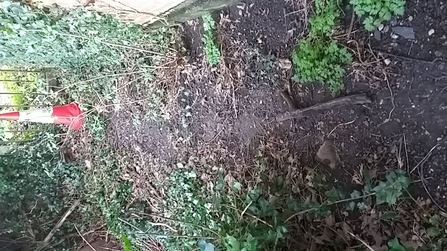Dropping litter is a serious crime, to the law and to the environment. Not only could you be fined a lot of money for littering, but it also hurts the environment and wildlife. Plastics and other non-biodegradable materials are the main cause of this disruption because they never go back into the cycle of nature, or they take a very long time. The average cost per household for keeping the streets clear of rubbish is around £28 per year (Litter and littering in England 2017 to 2018) even with litter pickers doing a lot to help out. In Scotland, litter-pickers now collect an average of 1,963 pieces of litter per kilometre (Zero Waste Scotland).
Litter picking for the environment
Before the litter pick
So what can you do to help?
You could go on your own litter pick! Find out if there is a group who hold litter picking sessions in your area, or you could invite friends to your local park to litter pick, do it with your family or on your own. I chose to litter pick with my mum in the area behind my garden, which was really covered in rubbish that people throw down from a small residential car park. To start I got my litter picker and bags, one recycling and one bin bag. I started by picking up individual bits of rubbish with the litter picker, but it was a bit time consuming, so I switched to oversized gardener’s gloves over normal gloves which were warm and relatively dry, and that enabled me to pick up multiple bits of rubbish at the same time. We found two traffic cones! We found a few bugs that were living in the rubbish we picked up, which fills me with hope that they will have a free life in the wild now!

After the litter pick
We found a lot of things that could have been recycled, like plastic bottles and metal cans. Here are a few things to consider when litter picking:
-
Be careful of rusty cans or broken glass.
-
De-risk things that could hurt wildlife further down the line (for example if what you put in the bin finds its way to the sea) such as cutting the rings of plastic drinks holders.
-
If you can, then do separate what you find into what can and can’t be recycled.
-
If something that could be recycled is really muddy then you can either clean it or put it in the general waste bin bag so that it doesn't contaminate the recyclables.
Among the bits of boring rubbish, we found some cool things too. We found a pair of flip flops, two tennis balls, a hippo toy, a paint roller, roller tray and paintbrush, a car engine, an unopened packet of popcorn, two and a half ceramic bowls, an empty toolbox, two small baskets and a bigger basket, plus lots more. So it was very well worth it just for the treasures I found, plus I did my bit to help the environment. This is what it looked like after we’d cleaned it up - I think we did a pretty good job! In total it took me two and a half days and we filled five bags; two recycling and three bin bags.
To find out more about taking part in safe litter picking and beach cleans, download the activity sheet here.
